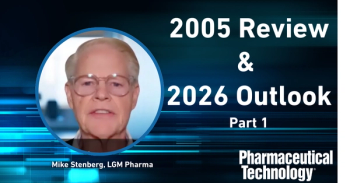
WFI System Meets European Requirements
Bosch’s new system for the production of water for injection uses membrane processing and ultrafiltration.
Bosch’s new system for the production of water for injection (WFI), which is used in solutions for injection and infusion, uses membrane processing and ultrafiltration. Previously, it was only possible to produce WFI for the European market using distillation. However, as of April 1, 2017, the revised
allows, for the first time, WFI to be obtained using other comparable processes.
The Bosch subsidiary Pharmatec designed a WFI production unit using membrane processes that meets the requirements explained in a
Until now, in the European Union, this method was only approved for the production of highly purified water (HPW), while in the US and Japan it has already been approved for obtaining WFI. In the future, the process will also be permitted by European authorities-albeit with additional, specific requirements, notes Bosch. Essentially, the unit must produce water under conditions that prevent the growth of microorganisms and other impurities. For reverse osmosis systems, EMA stipulates regular sanitization of the unit using hot water, primarily to prevent the formation of biofilms. Biofilms are caused by microbes, such as bacteria, and are difficult to remove from industrial systems. For additional protection, chemical sanitization must also be an option.
The Bosch unit allows routine thermal sanitization; using hot water sanitization, temperatures of 85 oC can be reached. In addition, EMA recommends chemical sanitization using ozone, to minimize the risk of microbial contamination; the Bosch unit offers this option as well. To prevent contamination as a result of insufficient barrier properties, the membranes’ integrity is checked on a regular basis.
Bosch has now reworked the WFI unit, including a more hygienic design and built-in measuring technology to monitor the system. The stainless steel used in the storage and distribution systems does not affect the water quality. Further, the system allows all the components to be thermally sanitized at any time. “Monitoring all the processes in the production chain is essential to guaranteeing the microbial quality of the water, which is why we fitted the unit with various sensors and measuring devices to monitor the water quality throughout the process and to check the individual steps,” said John Medina, sales manager at the Bosch subsidiary Pharmatec, in a press release. “Total organic carbon (TOC) is a key indicator of the water’s quality, and since it is also a parameter for the risk of microbial contamination in the overall system, it has to be continually monitored. Conductivity is another important parameter, and here the EMA stipulates inline process control. The unit is equipped with an online measuring system to monitor specific conductivity. In order to routinely test the water in real time, Bosch has also installed an online microbe counter, which continuously records and quantifies the level of microbes and inert particles using light-induced fluorescence measurements and algorithms. All parameters are centrally monitored and controlled by means of an intuitive interface.”
Source: Bosch
Newsletter
Get the essential updates shaping the future of pharma manufacturing and compliance—subscribe today to Pharmaceutical Technology and never miss a breakthrough.




